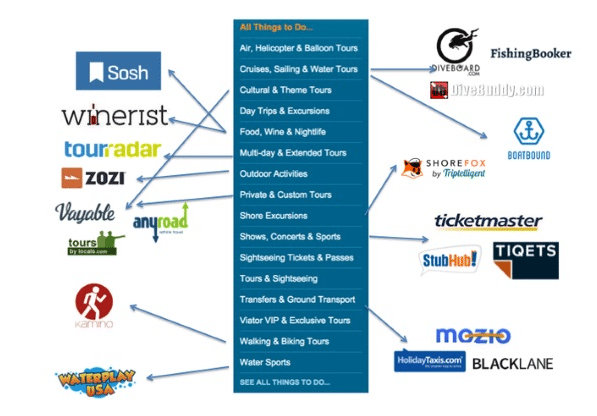Skift Take
Even as competition in the online tours and activities sector ramps up, the market faces a range of challenges. The biggest obstacle is making more tour products available digitally.
This week we released our latest report in the Skift Trends series, Future of Tours and Activities Tech and Marketing.
Below is an extract. Get the full report here to get ahead of this trend.
Yet another challenge facing the tours and activities sector as it looks to bring its product inventory online is the huge variation in the items sold by different tour operators.
For other travel industry categories like hotel rooms and flights, selling their products online is relatively simple because the number of variables involved are limited. “Airfare, hotels and car rentals have been commoditized to the point where consumers can do direct comparisons,” said Rezgo founder and CEO Stephen Joyce. “All that data is available so it’s much easier to be able to do searches and comparisons on those products.”
With tours and activities, a travel purchase covering everything from multi-day group tours to cooking classes to entrance tickets at amusement parks, trying to explain product distinctions in a consistent way across different websites and operators is challenging.
“There are tens of thousands of small operators, and they don’t think collectively at all,” said Rod Cuthbert, the founder of Viator and now CEO of Rome2Rio, a transportation search engine, speaking with Skift in 2013. “The owners of hotels and other businesses in the travel industry are often principally business people, but tour operators are often close to their offering.”
This lack of a collective tours and activities mindset extends to how different types of tour products are merchandised and sold. While a traveler may have very specific criteria in mind when booking a tour (for example, the tour’s price, expertise of its guide, its location or good reviews) the subtleties of these different types of factors can get lost on larger tours and activity booking sites.
One solution that may fall into place is a more widely agreed-upon set of supply-side APIs, allowing tour operators to easily plug their inventory into distribution sites en masse rather than completing the process manually or piecemeal across multiple competitors.
Tour operators mention Viator as one company that’s done a good job pioneering a consistent back-end process to upload products. “Viator is starting to fix this problem, and we link with Viator’s application programming interface [API] now since they show us our live inventory, but I’m not aware of other sites that do that,” said David Naczycz, founder of Urban Oyster Tours.
More important, however, will be the influence of other large online travel industry players who have the market clout and resources to handle all the variables involved. “If you think about that $125 billion global pie, there are lots of slices of that pie you need to solve for,” said Zozi CEO T.J. Sassani. “Tours, activities, daily rentals, hourly rentals, nightly rentals, lodging components, multi-day operators, ticketing, events, payment platforms, B2B payments, scaling business internationally…in order to go about this in a way that scales the industry, it takes a significant amount of capital.”
Get Skift Research
Skift Research products provide deep analysis, data, and expert research on the companies and trends that are shaping the future of travel.
Have a confidential tip for Skift? Get in touch
Tags: research reports, tours and activities
Photo credit: Viator's app on an Apple iPad. Skift

